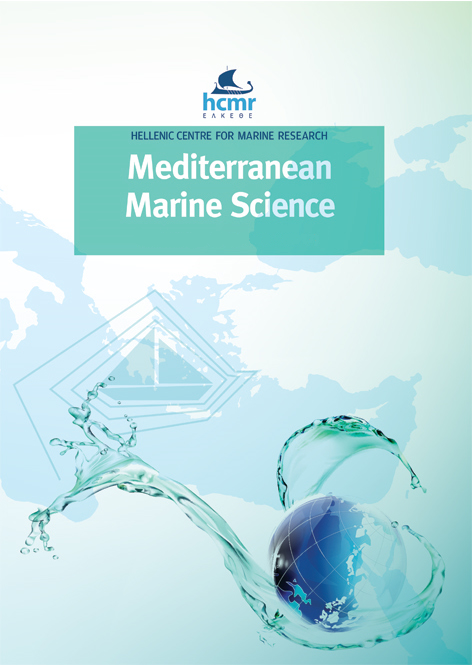Epilithic diatom communities from areas of invasive Caulerpa species (Caulerpa taxifolia and Caulerpa cylindracea) in the Adriatic Sea, NE Mediterranean

Περίληψη
Epilithic diatom community structures are compared among three locations of the eastern Adriatic Sea coast (Croatia), in the presence of two different invasive Caulerpa species, C. taxifolia and C. cylindracea, which have spread rapidly in the Mediterranean in the last decades. Forty samples were taken seasonally at three sites (island of Hvar, island of Mljet, and Dubrovnik) between November 2008 and October 2010. Light and electron microscopy examinations were used for qualitative analysis. Altogether 310 epilithic taxa belonging to 65 genera were identified. The highest number of these taxa belonged to Mastogloia (48) and Amphora (32), followed by Diploneis (24), Nitzschia (23), Navicula (22), and Cocconeis (19). A similar seasonal shift in growth form structure was observed for epilithic communities at the three sampling sites, where the number of erect group diatoms doubled (Hvar, Mljet) and tripled (Dubrovnik) in spring. Apart from erect forms, Dubrovnik and Mljet were characterised by adnate forms, while Hvar was characterised by tube-dwelling forms. The highest values of the Shannon-Wiener Diversity Index were recorded in autumn and ranged from 5.26 to 5.34. ANOSIM tests performed on species relative abundance data confirmed that the diatom communities differed significantly between the sampling sites, and that the differences were correlated with the presence of the two species of invasive macroalgae (Hvar – area of C. taxifolia; Mljet and Dubrovnik – areas of C. cylindracea). As revealed by SIMPER analyses, the group of taxa contributing the most to variance between diatom assemblages from sites of different invasive alga included Cocconeis scutellum var. scutellum, Rhopalodia pacifica, Navicula ramosissima, and Berkeleya rutilans. Although the spatial variation in communities may also reflect the effects of unmeasured environmental variables, the results suggest the possible influence of invasive seaweeds of the genus Caulerpa which may affect the habitat by competing with autochthonous algae. This study contributes to the knowledge of diatom diversity both at regional and at broader scales in these challenged environments.
Λεπτομέρειες άρθρου
- Πώς να δημιουργήσετε Αναφορές
-
CAR, A., WITKOWSKI, A., JASPRICA, N., LJUBIMIR, S., ČALIĆ, M., DOBOSZ, S., DUPČIĆ RADIĆ, I., & HRUSTIĆ, E. (2019). Epilithic diatom communities from areas of invasive Caulerpa species (Caulerpa taxifolia and Caulerpa cylindracea) in the Adriatic Sea, NE Mediterranean. Mediterranean Marine Science, 20(1), 151–173. https://doi.org/10.12681/mms.14330
- Τεύχος
- Τόμ. 20 Αρ. 1 (2019)
- Ενότητα
- Research Article
Authors who publish with this journal agree to the following terms:
- Authors retain copyright and grant the journal right of first publication with the work simultaneously licensed under a Creative Commons Attribution Non-Commercial License that allows others to share the work with an acknowledgement of the work's authorship and initial publication in this journal.
- Authors are able to enter into separate, additional contractual arrangements for the non-exclusive distribution of the journal's published version of the work (e.g. post it to an institutional repository or publish it in a book), with an acknowledgement of its initial publication in this journal.
- Authors are permitted and encouraged to post their work online (preferably in institutional repositories or on their website) prior to and during the submission process, as it can lead to productive exchanges, as well as earlier and greater citation of published work (See The Effect of Open Access).





